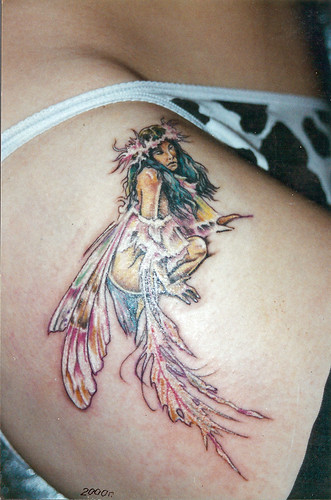LE MONDE 24.06.09 16h10 • Mis à jour le 24.06.09 16h10
Critique
Le monologue dansé d'Angelin Preljocaj

Le chorégraphe Angelin Preljocaj lors de son solo à Montpellier Danse, "Le Funambule", le 21 juin 2009
MONTPELLIER ENVOYÉE SPÉCIALE
Il n'est pas si seul, mais tout de même. Pour son premier solo, à l'âge de 52 ans, le danseur et chorégraphe Angelin Preljocaj s'est appuyé sur une nouvelle partenaire, la designeuse et scénographe Constance Guisset. Elle lui a dressé un autel en papier blanc dont les pages bruissent lorsqu'il s'assoit dessus, et qu'il peut lacérer à coups de couteau. Il y lit parfois son texte, Le Funambule (1958), de Jean Genet, déclaration d'amour à un fildefériste à travers son art, qui donne son titre au spectacle.
Angelin Preljocaj n'est pas comédien, mais tout de même. Sur le plateau très zen de l'
Opéra Comédie de Montpellier, lundi 22 juin, habillé d'abord d'un tee-shirt blanc et d'un pantalon beige, il récite et danse aussi en même temps les mots de Genet. Il a appris le texte par coeur, réussit à en restituer le sens sans emphase, dans un tremblé léger qui résiste à l'habileté de la comédie, et c'est bien ainsi.
Plus qu'un solo, Le Funambule est un monologue dansé dont la gravité tient aussi à l'interprétation, encore démunie, souvent douloureuse, de Preljocaj. Il ne s'adresse pas frontalement au public, parle plutôt de profil à un interlocuteur fictif situé dans les coulisses. Préserver cette tension nerveuse, qui fait parfois basculer le texte du côté du mantra, est sans doute le vrai défi de ce spectacle condamné à tourner.
Il danse tout de même, évidemment ! Quinze ans que Preljocaj n'avait pas grimpé sur scène et mis à l'épreuve ses lignes de chance chorégraphiques. Arabesques avec la nuque penchée, sauts groupés des deux jambes, bras bien droits qui se brisent. La sécheresse dynamique s'est émoussée, cédant la place à une grâce lointaine, comme celle de vieux vêtements cousus main qui lui vont encore bien.
Il fonce, Preljocaj ! Il n'est pas l'homme de quarante-deux ballets pour rien. Il a des idées, s'offre quelques très beaux effets mais toujours au plus près du poème. Face à un Genet lyrique, il ose une certaine banalité, la fatigue ordinaire d'un homme qui s'assoit et reprend son souffle. Pour se la jouer soudain en pirate accroché à l'un des haubans soutenant le mât de son cirque imaginaire.
Avec Genet en bouclier, Preljocaj dégage la place d'un autoportrait façon mauvais garçon des Balkans (il est d'origine albanaise). Il rappelle aussi combien l'écriture du texte et de la danse se confondent dans une seule et même tâche. Pendant que des pages monumentales de papier blanc tombent des cintres, on se souvient de cette formule de Preljocaj à propos de sa mère Liza. "Je danse pour que Liza lise."
Pour rester vivant dans ce métier, et pas seulement efficace, il fallait à Preljocaj se risquer sur le fil de funambule de Genet, sa lecture de jeunesse. Se cogner aussi à un autre savoir-faire que celui de la danse. En avoir peur mais aimer cette trouille-là. Parier sur la maladresse pour oser le suspense. Preljocaj, la maigreur affamée, s'est offert ce cadeau effrayant, jouissif.
Le chorégraphe, directeur du
Ballet Preljocaj d'Aix-en-Provence, a choisi le festival
Montpellier Danse pour sa performance. Il a bien fait. Lundi, le public de l'Opéra Comédie lui a d'abord accordé un silence profond, à la mesure de celui du plateau, zébré par des motifs musicaux folkloriques et classiques. Enfin, les applaudissements ont éclaté, libérateurs.
"Le Funambule", de et par Angelin Preljocaj. Au festival Montpellier Danse, Opéra Comédie, Montpellier. Le 24 juin, à 22 heures. De 21 € à 30 €.
Sur Internet :
http://www.montpellierdanse.com/.
Rosita Boisseau
To learn more: www.lemonde.fr/culture/article/2009/06/24/le-monologue-danse-d-angelin-preljocaj_1210787_3246.html#ens_id=1210858
 Uncountable tattoos are available every over the world but every are not so popular due to their designs
Uncountable tattoos are available every over the world but every are not so popular due to their designs Tattoo means latest fashion of the world, tattoos having uncountable categories and no embody is available in this earth who can calculate this tattoos.
Tattoo means latest fashion of the world, tattoos having uncountable categories and no embody is available in this earth who can calculate this tattoos. Tribal tattoos, lower back tattoos, churchlike tattoos are come in the categories of famous and popular tattoos why because they looks very sexy and attractive.
Tribal tattoos, lower back tattoos, churchlike tattoos are come in the categories of famous and popular tattoos why because they looks very sexy and attractive. I conceive tribal tattoos are the lineage of all remaining tattoos because due to its name it indicates that it’s the first and very older comparability to other tattoos.
I conceive tribal tattoos are the lineage of all remaining tattoos because due to its name it indicates that it’s the first and very older comparability to other tattoos.











 If you have a chance to go, run because it's a must-see. The party organized during Art Basel was fantastically brazilian with caipirinhas and brazilian lounge music !
If you have a chance to go, run because it's a must-see. The party organized during Art Basel was fantastically brazilian with caipirinhas and brazilian lounge music !

































